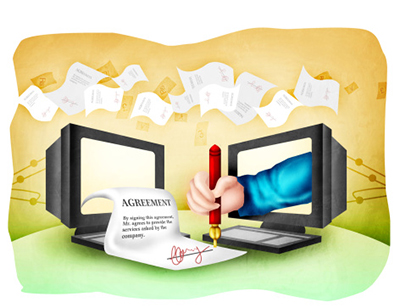Digital signatures can help businesses cut costs, improve customer relationships, reduce waste and ease compliance concerns. But a lot of people aren’t sure where to start when they decide to adopt digital signatures.
 1. Research and Pick a Vendor
1. Research and Pick a Vendor
Picking a digital signature vendor is an important decision. The service doesn’t just need to be convenient, but it also needs to produce secure and legal documents.
There are quite a few options available when it comes to digital signatures, but many don’t meet the security needs of a modern business.
It can be confusing to find out if a vendor meets your needs, but never fear. We’ve come up with a handy checklist of eight things you should look for in a digital signature vendor.
2. Get Participant from Across Your Organization
Be sure others in your organization are informed of the technology, its benefits and its applications relevant to their business and workflows. The implementation should involve people from across the business, from your IT team to your legal department.
3. Pilot Small, Think Big
Don’t expect to implement digital signatures for every single process, system or document in your organization right away. Starting with a limited scope gives everyone involved a chance to understand how to use e-signatures. Piloting one use case or application allows employees to watch for any slowdowns or unanticipated issues without compromising the entire organization.
Just because you should start small doesn’t mean you should plan small when choosing vendors. The best ROI for a digital signature product will come when you’re able to replace most of your paper-based processes with digital ones.
Before you start implementation, take a look at all of the available systems and departments that could take advantage of digital signatures (both internal processes and client-facing ones). Having this in mind when choosing a vendor will help you map out your long-term goals.
With these three tips in mind, you can be up and running with digital signatures in no time!
%20formatted-1.png?width=582&height=170&name=www.signix.comhs-fshubfsSIGNiX%20Logo%20Main%20(white)%20formatted-1.png)
%20formatted-1.png)
